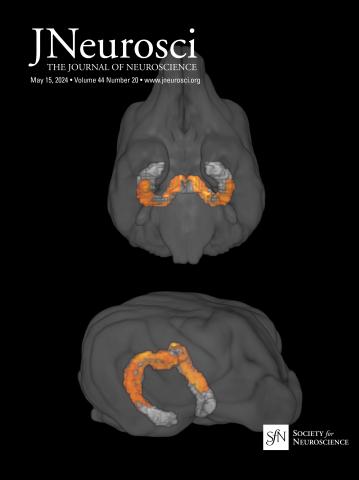摘要
每个动作都需要神经系统解决复杂的生物力学控制问题,但这一过程大多不为人们的意识所察觉。与此同时,我们也会有意识地体验到自己对动作的控制--我们的代入感(SoA)。SoA 是否与实现实际神经肌肉控制的神经表征相对应,这是一个具有伦理、医学和法律意义的开放性问题。如果 SoA 是有意识的控制体验,那么这就预示着 SoA 可以从实现所谓的 "逆动力学 "运动规划计算的相同大脑结构中解码。我们将人类(男性和女性)手部运动时的 fMRI 测量结果与在生物力学模拟中执行相同手部控制任务的深度神经网络(DNN)的内部表征进行了关联--揭示了大脑皮层对感觉运动状态的详细编码,这些编码对每个受试者都是独特的。然后,我们通过电刺激篡夺参与者的肌肉控制权来操纵 SoA,结果发现,模型反动力学表征所能解释的相同体素也能预测 SoA,而令人吃惊的是,这些体素位于典型的视觉区域。重要的是,模型与大脑的对应关系和稳健的 SoA 解码都可以在单个受试者身上实现,从而可以在个体水平上研究运动表征与意识之间的关系。 意义声明 生物力学控制问题的内在复杂性被我们主观经验中看似简单的指挥运动所掩盖。我们这方面的经验表明,我们对控制身体所涉及的神经和心理表征的有意识接触是有限的--但在众多可能的表征中,我们实际上意识到了哪些表征呢?随着新兴神经接口技术不断推动人类自主性的发展,了解哪些运动控制表征会渗透到意识中变得越来越重要。在我们的研究中,我们利用已学会控制模拟身体的机器学习模型来定位大脑中的生物力学控制表征。然后,我们证明这些大脑区域可以预测在功能性电刺激过程中对肌肉组织的感知控制。Every movement requires the nervous system to solve a complex biomechanical control problem, but this process is mostly veiled from one's conscious awareness. Simultaneously, we also have conscious experience of controlling our movements-our sense of agency (SoA). Whether SoA corresponds to those neural representations that implement actual neuromuscular control is an open question with ethical, medical, and legal implications. If SoA is the conscious experience of control, this predicts that SoA can be decoded from the same brain structures that implement the so-called "inverse dynamics" computations for planning movement. We correlated human (male and female) fMRI measurements during hand movements with the internal representations of a deep neural network (DNN) performing the same hand control task in a biomechanical simulation-revealing detailed cortical encodings of sensorimotor states, idiosyncratic to each subject. We then manipulated SoA by usurping control of participants' muscles via electrical stimulation, and found that the same voxels which were best explained by modeled inverse dynamics representations-which, strikingly, were located in canonically visual areas-also predicted SoA. Importantly, model-brain correspondences and robust SoA decoding could both be achieved within single subjects, enabling relationships between motor representations and awareness to be studied at the level of the individual.Significance Statement The inherent complexity of biomechanical control problems is belied by the seeming simplicity of directing movements in our subjective experience. This aspect of our experience suggests we have limited conscious access to the neural and mental representations involved in controlling the body - but of which of the many possible representations are we, in fact, aware? Understanding which motor control representations percolate into awareness has taken on increasing importance as emerging neural interface technologies push the boundaries of human autonomy. In our study, we leverage machine learning models that have learned to control simulated bodies to localize biomechanical control representations in the brain. Then, we show that these brain regions predict perceived agency over the musculature during functional electrical stimulation.

 求助内容:
求助内容: 应助结果提醒方式:
应助结果提醒方式:


